What makes the western shirt different from conventional shirts the signature pointed yokes on the front and on the back, longer tails, duel chest pockets with pointed flaps, pearl-snap closures down the front placket, pearl-snapped cuffs, etc. By doing so we hope to add a stronger impact, edge and renewed contemporary appeal to the western shirt, while at the same time honoring the rich heritage on which they are based.
All such design elements were conceived for a utilitarian purposes. A lonesome rider out on the range wouldn’t have to worry about carrying needle and thread to replace a button; the flaps on his pockets kept his tobacco tin from bouncing out while he rode; the yokes, with their double fold, made his shirt durable; the tighter fit prevented his shirt from getting caught on saddle horns and barbed wire; and the extra-long tails stayed tucked into jeans.
Over the years, Western shirt design has developed its own vernacular based on its myriad of elements.
Although the diversity within the western shirt style paradigm is ample there are however some common design elements that can be established, namely:
- Duel chest pockets either with flaps or in smile pocket version
- Signature pointed yokes on the front and on the back
- Cuffs in either barrel construction with a three-snap-closure or shotgun cuffs with five-snap-closure
- Snap buttons down the front placket, on cuffs and on pockets
- Piping to highlight the yoke design and the front placket as well as the cuffs and collars
Not all of the above listed elements would necessarily be present on a western shirt at the same time. For example smile pockets, piping and shotgun cuffs would usually go together while the flap-chest-pocket configuration would have barrel cuffs and rarely have piping features.
DUEL CHEST POCKETS
Steve Weil, Rockmount Ranch Wear Mfg. Co. coined in in the most precise way possible when he wrote: “Pockets in western shirts are like the grill on a car: they define the Western shirt more than any other element”.
That is why the naming of Western shirts most commonly links to the pocket type.
Generically speaking pockets in western shirts can be boiled down to two types; 1) the snapped flap pocket or 2) the smile pocket version. In addition there is the Bib-front shirt which has no pockets.
The flap pocket allowed the cowboy to keep things safely snapped in during riding and roping. The slanted angle of the smile pocket provided easier access while the reinforcements at the ends, in the shape of decorative embroidery, helped to withstand tearing.
“…western shirt pockets are like the grill on a car,
they define the shirt more than any other element. “
Steve Weil, Rockmount Ranch Wear Mfg., “Western Shirt: A Classic American Fashion”
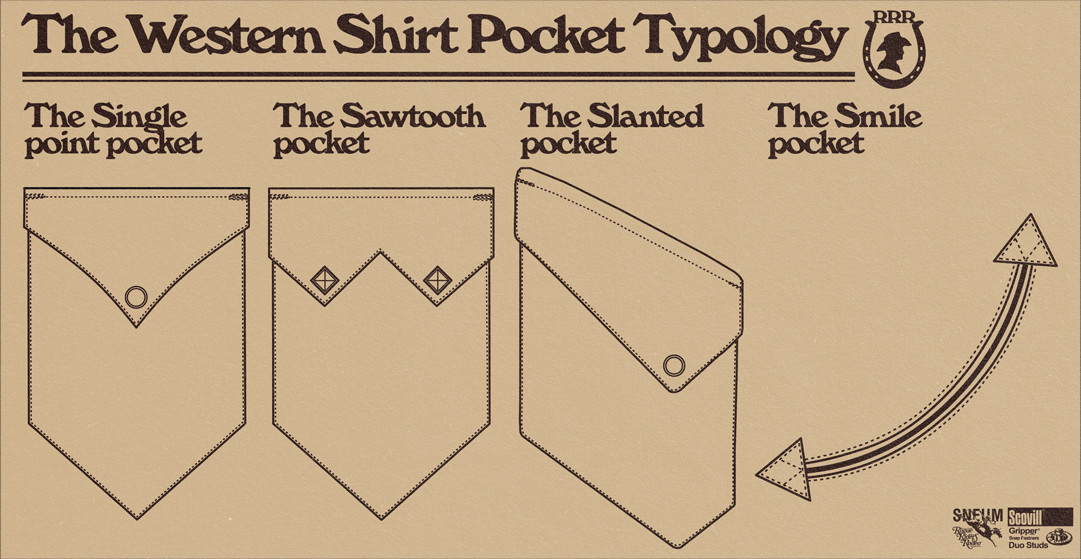
Flap pockets come in countless styles, and whether it be single-point, sawtooth or slanted flap pockets, can be ascribed to mere aesthetic considerations As the name indicates they are done with a flap that closes over a patch pocket’s opening to prevent things from falling out.
The single-point pocket, with the point in the center, is the most common type of Western shirt pocket. In our Sneum® range of western shirts we have accentuated both the flap and the patch pocket shape making them both pointier to give them more importance in the overall shirt make-up.
The sawtooth pocket takes its name from the two points forming a “W”and can be found with either round or diamond snaps. It can be done either with round snaps or the less common diamond snaps. In our SNEUM® range we opted for the diamond snap as we consider it being the right way to present this classic as also championed by Rockmount Ranch Wear Mfg. Co., et al.. In addition we accentuated both the “W” shape of the flaps as well as the patch pockets to render them more impactful.
The slanted pocket version with the cut-off corners on both flaps and patch pockets makes this version very characteristic as well. In our Sneum® we increased the angle of “slantness” further and accentuated the shapes.
“Smile” pockets hang on the inside of the shirt, like the front pockets on pants. This may actually be a carry-over from pant design. They are labor intensive to this day and therefor cost more. The construction is complicated with many more operations than a standard “patch” pocket. A pocket pouch is made, the front of the shirt is slit, and the pouch is sewn on the inside. Then the seams where the slit meets the pouch are finished. Sometimes they are piped and have embroidered arrow points on the ends or sewn on tabs. They come in a huge array of shapes.
SIGNATURE POINTED YOKES
A major distinguishing characteristic from conventional shirts is the curved stylized yoke down the front and back, that defines a shirt as being western.
The word yoke is a Western term, derived from the wooden harness worn by oxen to pull the wagons. They are an extra layer of fabric sewn seam down over the body of the shirt, front and back. A western yoke is curved, stylized (contoured ) and comes to one or more points , as opposed to a straight stitch commonly found in conventional shirt design.
From a design point of view, yokes accentuate broad shoulders. From a practical point of view, they might have been an adaption of the cowboy habit of wearing scarfs as another fabric layer to protect them from the elements. It has been said that some cowboys actually had scarves sewn down on their shirts to help shed water and provide a layer of insulation against the sun and the cold.
Another theory on the origins of this iconic western shirt characteristic is that yokes came from the leather capes that the Native Americans were wearing that eventually metamorphosed into the western yoke as we know it today.
Yokes come in a limitless number of shapes. Some are curved and scalloped, others are straight and simple. Most front yokes are single-point V shaped. Most back yokes are curved and most commonly single-point however can be found even in triple-point versions. The yoke can often be outlined by piping or cording, to accent the width and to provide a bit of flash.
Many highly embroidered shirts have no front yokes, leaving more room for coverage on the front. Front yokes are also rare on bib-front shirts.
“…A major distinguishing characteristic from conventional shirts is the curved stylized yoke down the front and back, that defines a shirt as being western.”
Steve Weil, Rockmount Ranch Wear Mfg., “Western Shirt: A Classic American Fashion”
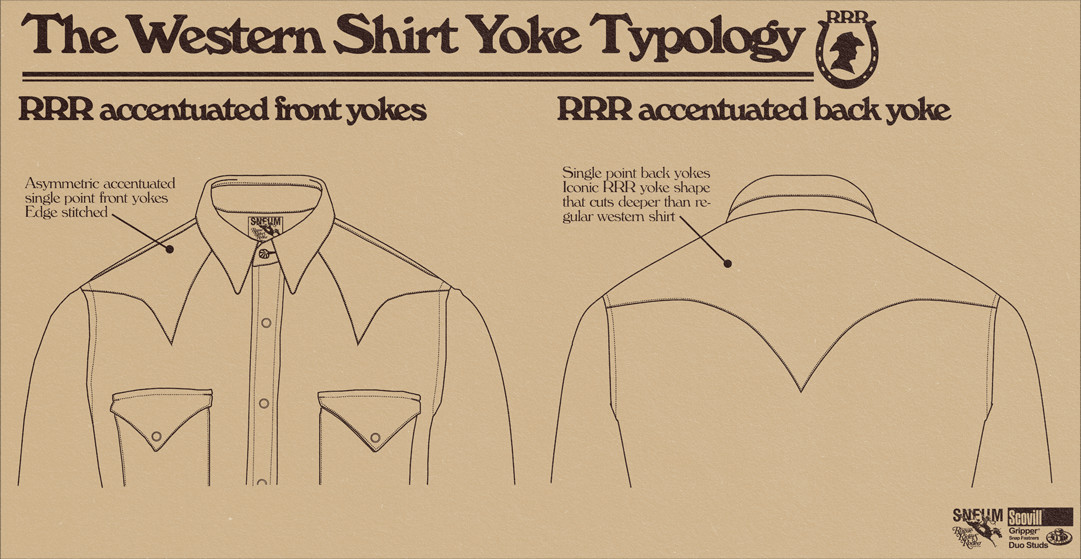
CUFFS
A major distinguishing characteristic from conventional shirts are the multiple snap button closures together with the sleeve placket. They are likewise longer and tighter fitted to make them less likely to get caught during active work.
Cuffs in western shirts can overall be divided into two different types, the most classic barrel cuff with a three-snap-closure and shotgun cuffs with five-snap-closure.
The range of cuff designs is as wide as pocket variations however in the below chart we have singled out the most generic types.
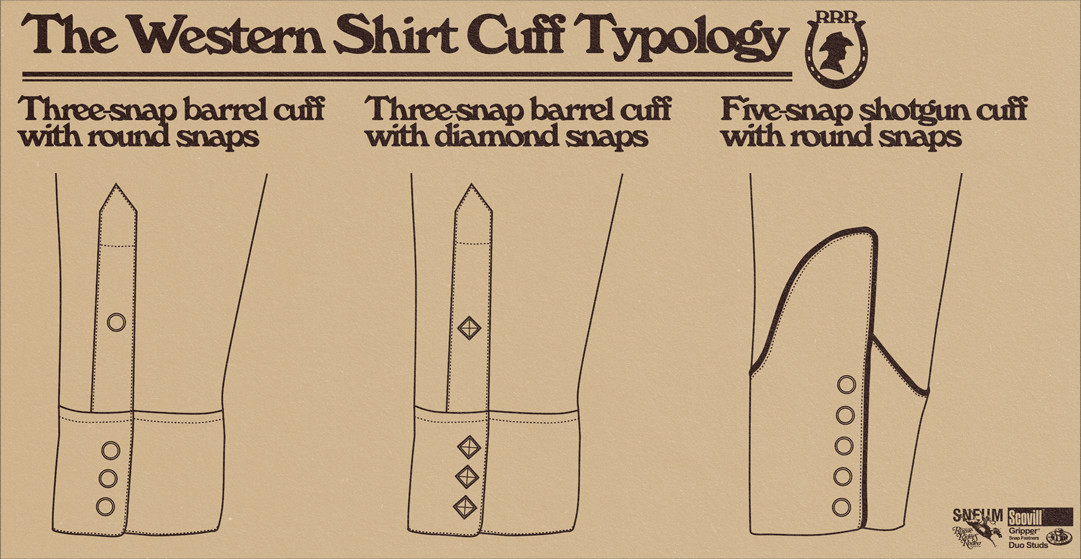
BUTTONS/SNAPS
Snapped front and cuffs are a primary design elements distinguishing Western Shirts from conventional shirts. But the snap button was not added to Western Shirt before the late 1930s early 40s.
Up until the 1930s they had simple sew-through buttons as can be found on conventional shirting although they tended to be bigger for the pre-1930s western shirts.
Around the 1930s Shank buttons came into use, which lookwise resembles the snap button as we know it. Most were Bakelite (a hard resin) or natural shell. They are domed with a sew-through shank. Shank buttons went out of use by the early 1950s, giving way to snaps
Snap buttons were a practical breakaway feature, where snaps release if the shirt gets caught on a fence, saddle horn, etc. Another practical element was no need for cowboys to be particularly adept with a needle and thread to sew on lost buttons. Most importantly, snaps added a distinct look, and a distinct look was what cowboys wanted to differentiate themselves from city slickers.
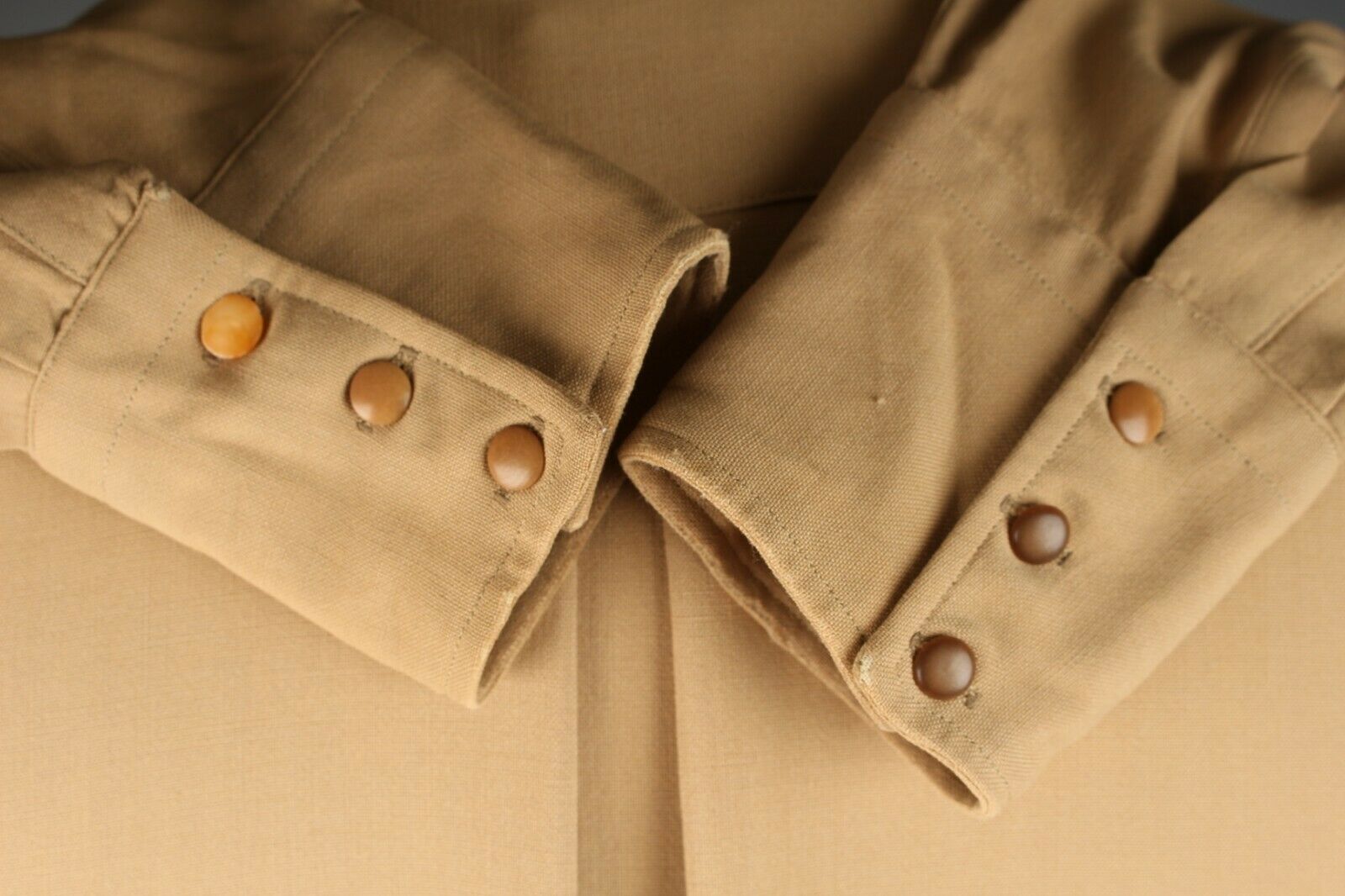
Example of the shank buttons used for early western shirts before being replaced by the “pearl” snap button we know today
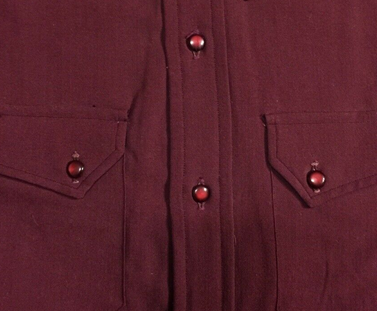
Example of the shank buttons used for early western shirts before being replaced by the “pearl” snap button we know today
During WW2, snaps were unavailable, so Western shirts were made with shank or regular buttons. The first snaps were open-ring type similar to contemporary diaper snaps. They were followed by flat, round enamel snaps, originally created to be used on gloves and produced by the Scovill Company. They were they earliest snaps used in abundance for commercially made shirts and they came in a range of colors and could be coordinated with the shirt. A number of brands used them in the 1940s and 50s.
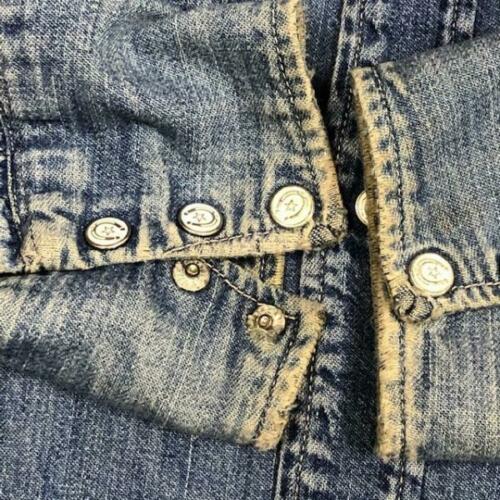
Example of the enamel snap buttons as precursor to the “pearl” snap we know today as being staple of the Western shirt.
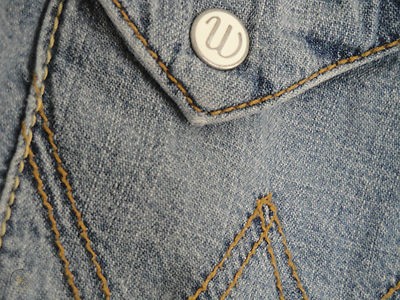
Example of the enamel snap buttons as precursor to the “pearl” snap we know today as being staple of the Western shirt.
Pearl snaps are what we normally think of when we talk about snaps. Genuine mother-of-pearl is the smooth pearly lining in oyster and abalone shells. Shell buttons have been used in clothing for centuries and continue to be used today.
The “pearl” snap was adapted from from pearl buttons and came into commercial use shortly after the WW2. They have beautiful, unique color and luster. The problem with real shell, however, is that it cracks when pressed during laundering and simply heavy-duty usage.
Synthetic poly-top snaps were introduced in the early 1950s as an alternative to the cracking-prone natural shell. Modem snaps are often called “pearl”, but that is a misnomer.
Although the first snaps were round, snaps came in a variety of shapes and colors. By the late 1940s natural shell became available in hex shape (6 corners) with nickel or gilt rims. Hex shapes were followed by the diamond shape with nickel rims. After the round snap the diamond snap is the second most common type.
FIT
Originally, the fit of the Western shirt was substantially different from conventional men’s shirts, which were boxy and featured Victoria-era removable collars until the 1920s. Western shirts were “form-fit” and flattering to the slim physique. From the practical standpoint of someone who would use them as active wear, the less loose they were, the less likely they were to snag. The fit was an important selling point of the Western shirts; it characterized the entire shirt. Neck and sleeve sizing exclusively the standard for more than fifty years. Fitted shirts were made in more than twenty sizes including neck size and sleeve lengths. This type of sizing is still made today but is largely replaced by Small-Medium-Large sizing. Relaxed fit followed with the same S-M-L designation. The S-M-L sizing enabled the manufactures to streamline production and reduce inventory at wholesale and retail levels. It also helped with exports as the previous inch-based sizing measurement is not used by most countries.
Women’s shirts, on the other hand, were conventionally form-fit, and women’s Western shirts followed this tradition. While women’s shirts were sized for women, they tended to be driven by men’s Western style, often matching men’s designs and fabrics. In fact, matching “his ‘n’ hers” shirts became an important selling point for decades. Traditionally, sales of women’s Western shirts are substantially lower than men’s. Since the Urban Cowboy fad, mainstream fashion has had a big impact on women’s Western shirts. Western designers began adopting mainstream fashion elements, and fashion designers pick up Western elements from time to time.
Fashion is by nature cyclical and so is fit. While men’s shirts were loose fitting until the advent of Western wear, slim-fitting neck and sleeve sizing was a standard until relaxed fit came into vogue in the late 1980s. When Western fashion came into being it was mainly popular with young, slim men. As consumers for Western wear aged, looser fit became popular as it forgives and hides heavier builds.
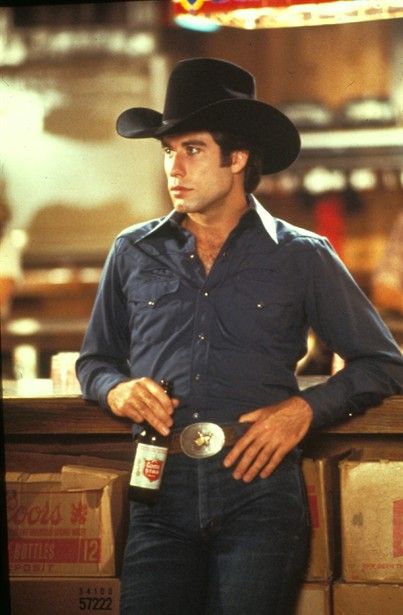
John Travolta Urban Cowboy (1980)
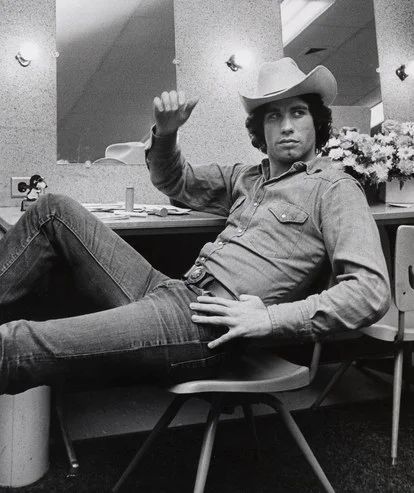
John Travolta Urban Cowboy (1980)
Much of the above text is based on the book by Steve Weil of Rockmount Ranch Wear Mfg., “Western Shirt: A Classic American Fashion”. We consider this to be the most exhaustive work done on the Western shirt and its history. We highly encourage readers to check out this book should they wish to explore the subject in greater detail.
SNEUM
Copenhagen based
menswear brand
proposing a
Scandinavian take
on the Americana
aesthetics
